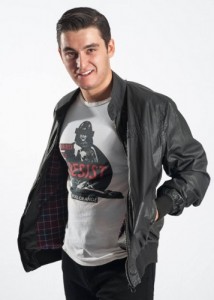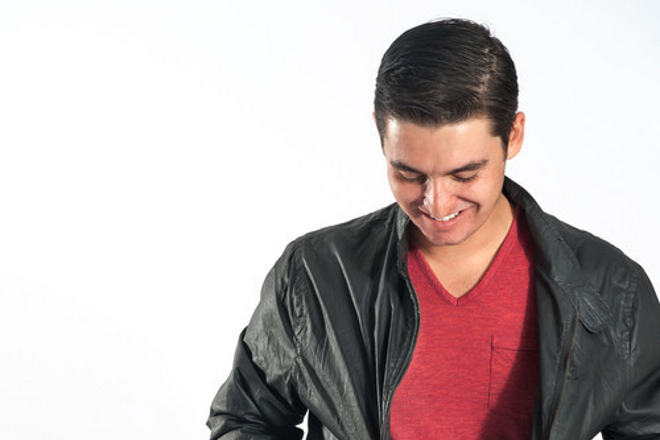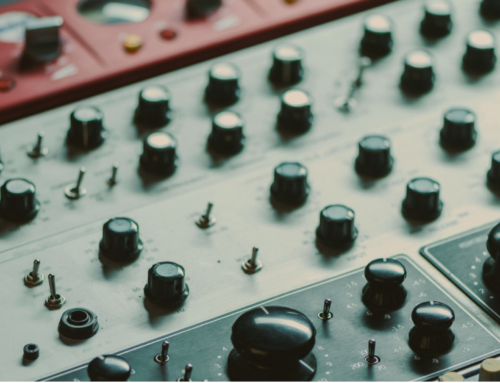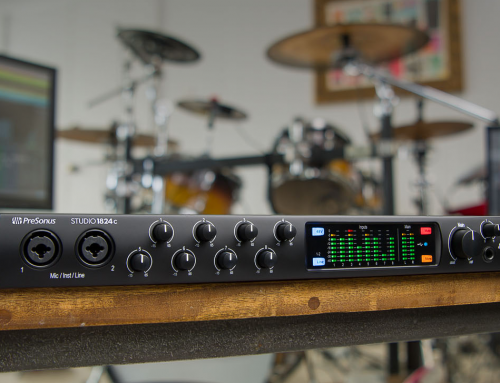“Melbourne Bounce” has been one of those dance music buzzwords tossed around over the past year. After what was dubbed the “Australian wave” in 2012, with performers like Feenixpawl, Tommy Trash, and Nervo getting global recognition, the subgenre also known as “Melbourne House” seems redundant at a glance – after all, didn’t we just go through this?
Not entirely. Melbourne house originated specifically from the Australian city’s club scene. Producers like Will Sparks and Joel Fletcher spearheaded it, putting out their own tracks and remixes of pop music staples like “Blurred Lines” and Maroon 5’s “Maps.” 2013 saw it leave the single-country continent: A-Trak started adding the sounds to his sets, while TJR – a California producer – took this big room style characterized by hard-hitting horns, more percussion, and a fatter, more prominent bass line to the top of the Beatport chart with “Ode to Oi” and “What’s Up Suckaz.”
Of course, nearly every new sub-subgenre has its detractors. For Melbourne Bounce, it’s critics and dance music listeners claim that its elements are too similar to “big room” – that its producers are creating something indistinguishable beyond a few elements. You can make this argument about any other sub-genre, however, and we live at a time in dance music history in which you just add a bit more dirt to deep house and speed it up, and it mutates into “future house.”
Melbourne house, whether a flavor of the moment or a long-lasting trend, has already spawned off another style – “Miami Bounce,” headed by Landis. This 22-year-old producer hailing from the Florida city started getting attention over the last few months with his sound – reminiscent of the Melbourne style but leaning more toward thicker, synth-driven big room melodies and electro-style drops.
Single “Watch You,” out in October on Beatmashr, gained the most traction, but the track is essentially a culmination of two aspects: Landis’ own background and the dance music melting pot Miami has turned into.
In an interview with Dance Rebels, Landis talks about being influenced by all the styles coming through Miami’s clubs, and later interned at Brass Knuckles’ studio, where he also worked with David Solano.
His own productions initially reflected the Dirty Dutch style of Quintino and Chuckie, but later developed into tracks with a deeper bass groove – a characteristic of Melbourne Bounce.
 We had a chance to catch up with Landis to speak about his distinctive sound. Speaking about creating his own subgenre, “I wanted to classify the music I was making as bounce, but it’s a bit different than the popular Melbourne Bounce sound,” he explained over email. “The best solution was to create my own subgenre to describe my sound.”
We had a chance to catch up with Landis to speak about his distinctive sound. Speaking about creating his own subgenre, “I wanted to classify the music I was making as bounce, but it’s a bit different than the popular Melbourne Bounce sound,” he explained over email. “The best solution was to create my own subgenre to describe my sound.”
Some might consider the move a bit pretentious – just remember the flack Porter Robinson got for calling his productions “Complextro” a few years ago. But without a reference point on this side of the pond, it makes sense. “The bounce sound in general has really been taking off in the past year,” Landis explained about his decision. “I think it’s important to separate from the pack, and that’s what I’m trying to do with my Miami Bounce sound.”
Melbourne Bounce itself is somewhat of a melting pot subgenre – a style pulling from multiple, global sources that just happened to start in Australia. As much as it’s considered an offshoot of big room – a descriptor that easily describes the “first wave” of prominent Down Under performers like Dirty South, Nervo, and others mentioned above – Melbourne House borrows from the rougher, harsher, more percussive elements of Dirty Dutch. The synths and kick drums get amped up, and the bass creates a second rhythmic element – all aspects making it work with Melbourne Shuffle dancing. Bigger horns – think more of a marching band sound than a single instrument, like you’d expect to hear on a deep house track – have further pervaded the texture to create a stomping character.
Some attribute this combination to Will Sparks’ background. According to an interview with the Cairns Post, the “Ah Yeah” producer listened to death metal and hardstyle, and it’s fairly clear that these elements – the faster, more aggressive character, the harder-hitting bass – have not only influenced his style but inspired others.
These characteristics are evident in Landis’ own productions, but the Miami melting pot steers it in a different direction, almost back to the synth-driven sounds of progressive house. About what sets Miami Bounce off from its Melbourne counterpart, he explained, “It has a lot to do with the sound selections. For the lead sounds, I try and make sure they are groovy yet hard. Instead of the typical big room break, I create more moving electro breaks and try and make sure the structure of the track is great for playing out. I’ve also been experimenting with slowing the tempo down to 126 (I did this for ‘Watch You’) to give it groove.”
Melbourne Bounce doesn’t appear to be slowing down any time soon. The second half of October saw a slew of new releases and a tour featuring the subgenre’s biggest performers. Aside from “Watch You,” Chuckie’s rebranded Dirty Dutch Music label has been promoting Kronik and Krunk’s “Vamonos,” while Milk N Cookies added a low-key oeuvre with “Monster.” Similarly, as big-name DJs, like David Guetta, Dada Life, Madeon, and The Chainsmokers, add Melbourne Bounce into their sets, Sparks, Joel Fletcher, and Timmy Trumpet have been going around North America with their own Bounce Bus Tour.
When it comes to pushing this American interpretation of these sounds, Landis has no intention of stopping. “I definitely plan on exploring this style and developing it,” he says. “My next original release ‘Lose Control’ (with Fatman Scoop and Crespo) will be another track I’d classify as my Miami Bounce. Look out for that release in the next month or so.”
As “big room” develops into its own offshoot of progressive house, it’s inevitable that producers from other parts of the world will pick up on it and add their own takes. And with mainstream house moving away from the pop star- and vocally-driven tracks from two years ago, latching onto big room’s wave makes sense.
Yet, both Miami and Melbourne Bounce reflect another trend: The globalization of dance music. Specifically, that even when you have a “local” sound, it ends up influenced by and borrowing from a palette of styles reflecting not a city’s or region’s tastes but electronic dance music overall – be that the growing preponderance of big room in North America, or the harder, more aggressive styles coming out of the Netherlands. In essence, what you have is a style reflective of a particular location that is further accessible enough for listeners across the world.





